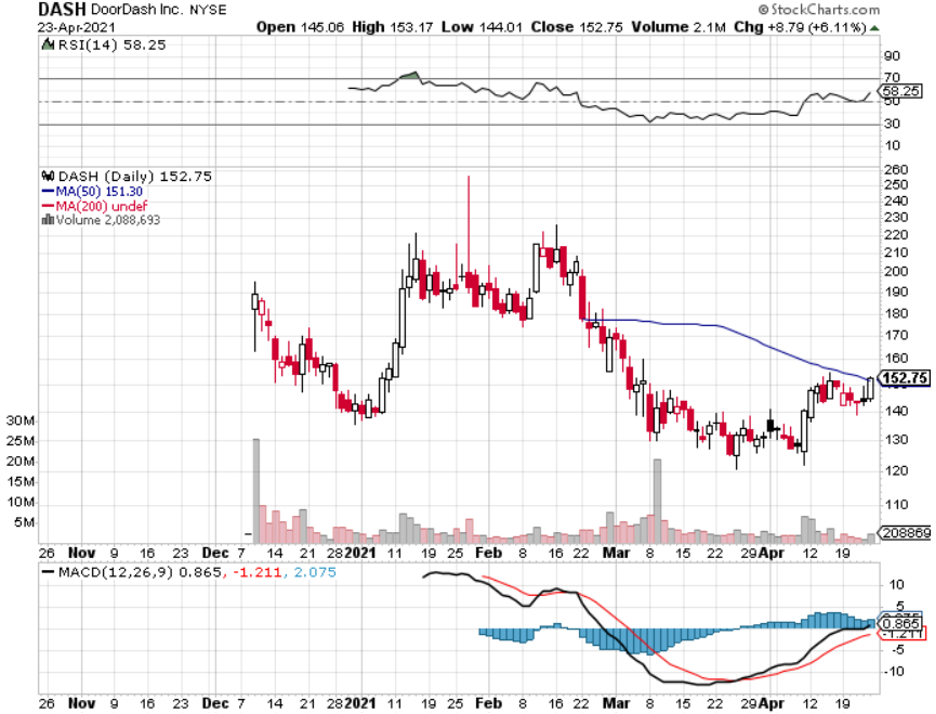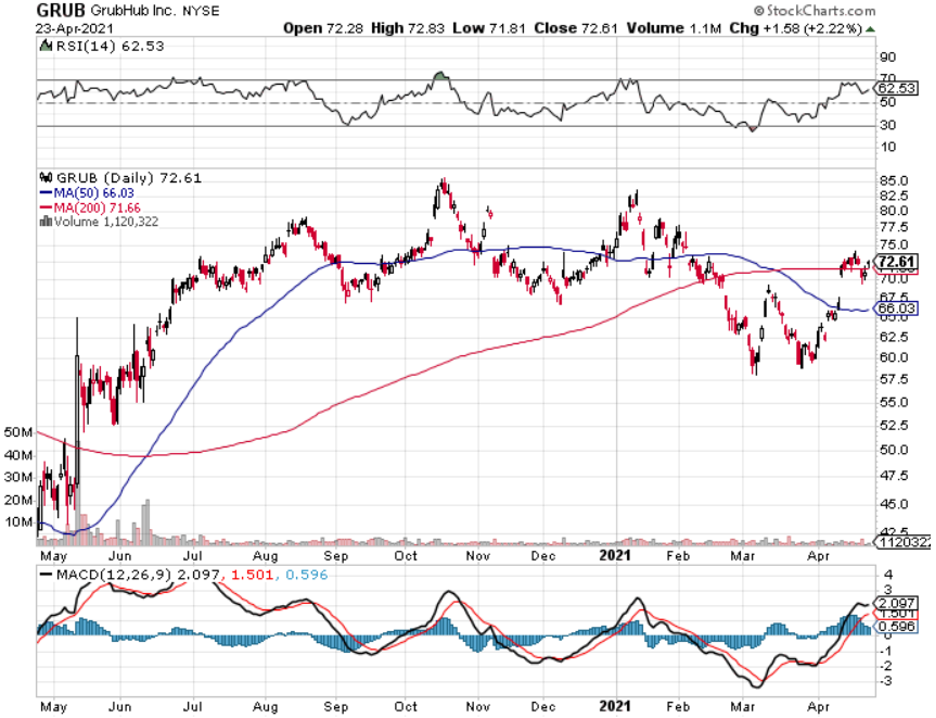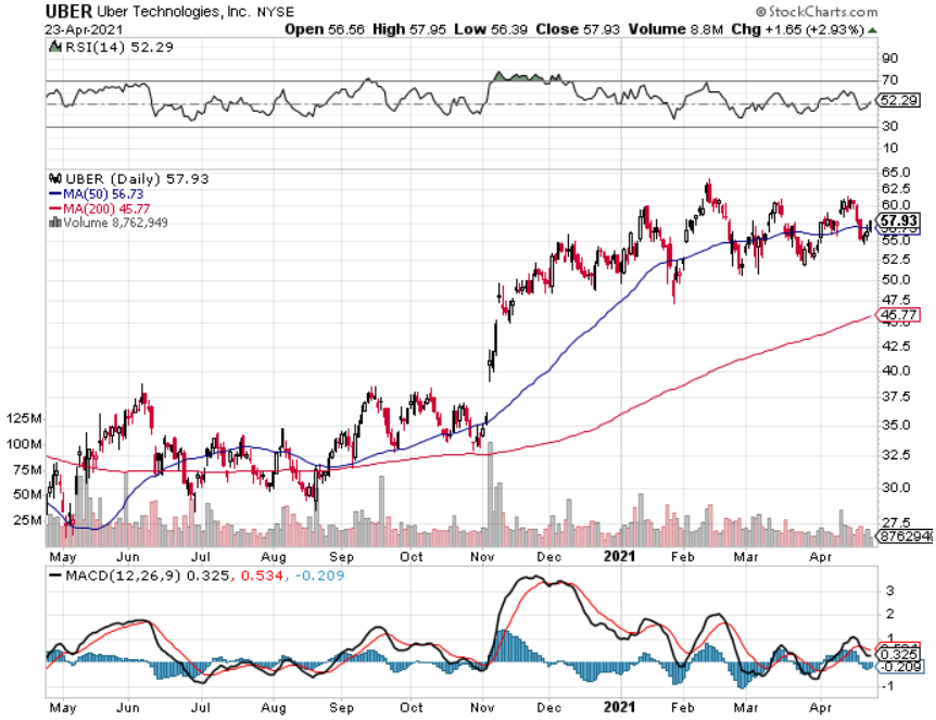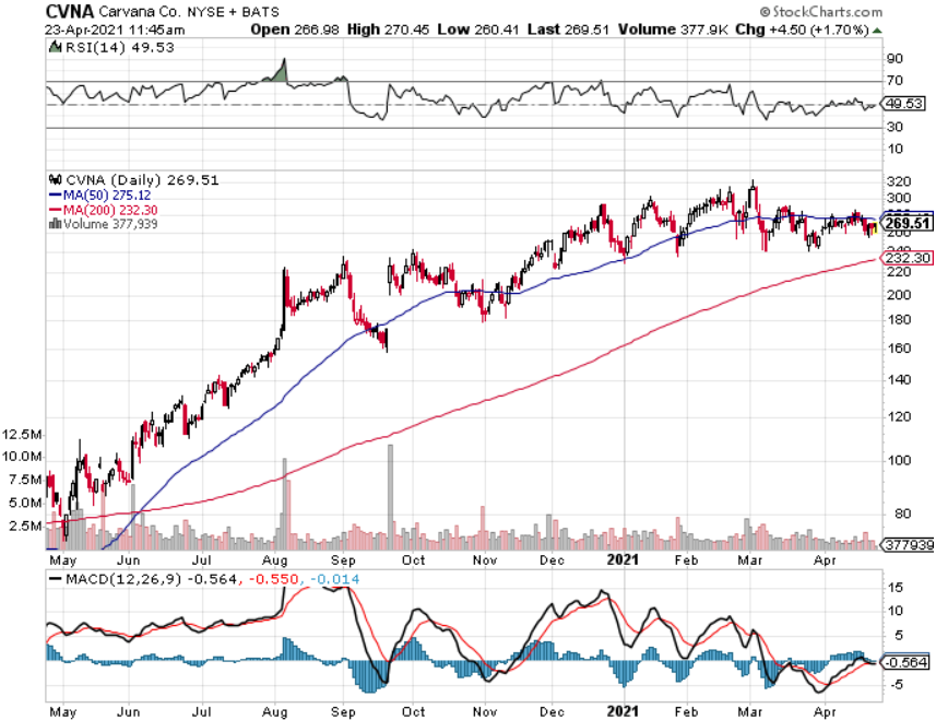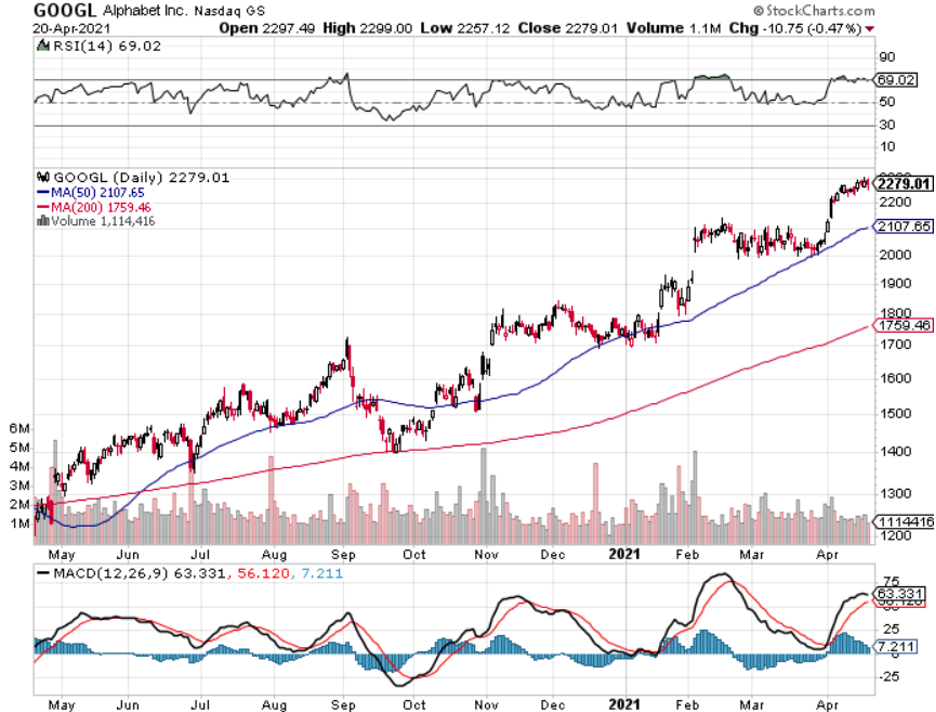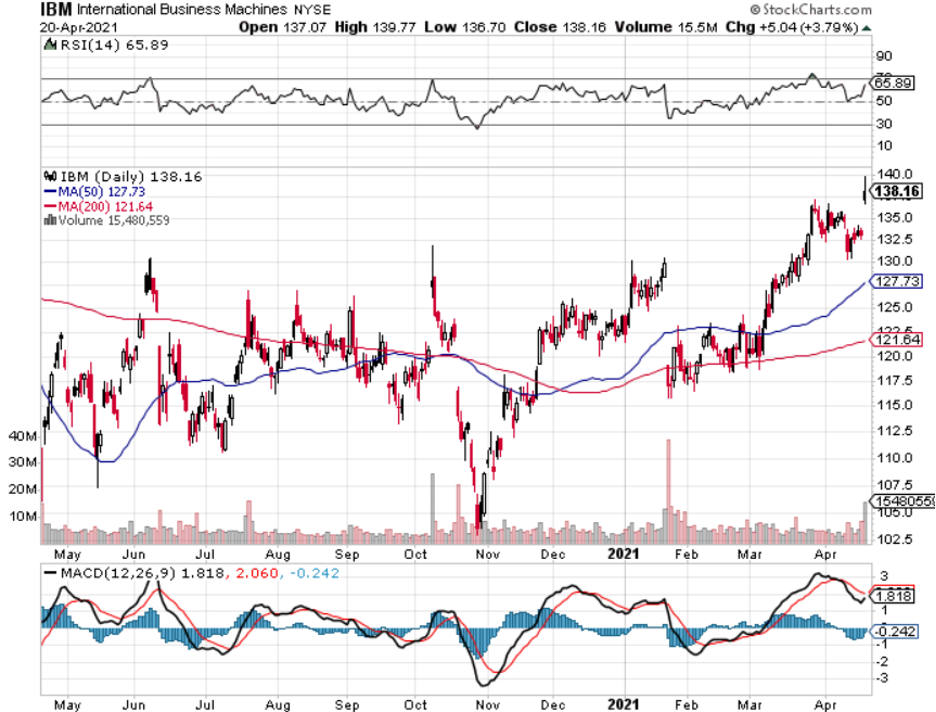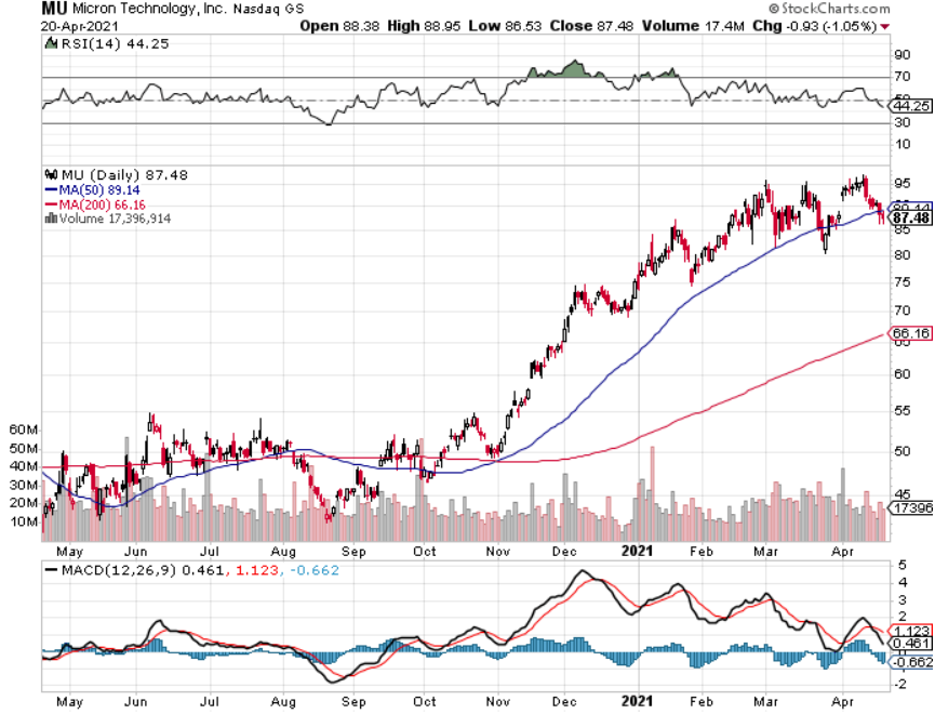“I don’t want to be liked.” – Said Founder and Former CEO of Alibaba Jack Ma
Mad Hedge Technology Letter
April 26, 2021
Fiat Lux
Featured Trade:
(BUY OR SELL DOORDASH?)
(DASH), (GRUB), (UBER)
As the work from home economy de-levers, the biggest loser of this trend will be the food delivery company DoorDash (DASH).
As the stock rallied last Friday by 6% into the close, I couldn’t help but think to myself that it is a great time to short the stock.
Considering that total sales grew close to 400% last year but the stock is lower, this basically means that DASH couldn’t deliver what shareholders wanted in a historic year for most tech companies.
What makes anyone think that 2021 will be different?
Imagine what the next phase of development looks like, quite bleak.
The health crisis unlocked a tsunami of growth for many emerging and unprofitable technologies.
Software and hardware companies were clear beneficiaries of economic lockdowns that triggered a boom in the food delivery industry.
With nowhere to eat out at, the business of eating a prepared meal was effectively handed to DoorDash on a silver spoon.
Despite this powerful tailwind, the company still failed to deliver positive earnings amid additional expenditure such as marketing.
As the pandemic navigates towards a solid solution and consumers return to restaurants, DoorDash will be left holding the bag.
First, let me say, DoorDash’s operating narrative is weak.
They earn revenue by taking a percentage of restaurant sales on its platform.
A glorified pizza delivery boy at scale is what they really are.
They describe sales as marketplace gross order value or GOV which totaled $24.66 billion in 2020 — a 326% increase over 2019.
In short, it's the total amount of money that DoorDash users paid for food.
For context, this metric grew 187% in 2019 compared to 2018, but off a much lower base from $2.8 billion and now project marketplace GOV in 2021 in the range of $30 billion to $33 billion, which is a substantial deceleration in growth rate from 2020.
The bottom line is they are still losing around the same amount of money with no solution in sight.
The next steps of the global economies are to open further, with fewer people staying home and using food delivery, so the question is whether the DoorDash marketplace will grow at all this year.
Despite a record 2020 that more than quadrupled the company's revenues, it is becoming clear that DoorDash will not even be close to profitable.
It appears DoorDash's growth in costs tracked closely with growth in revenue, in dollar terms, leading to net losses that only marginally improved.
The main thesis of these gig economies is that they become incrementally profitable at scale, but DoorDash’s financials suggest it isn’t.
I would like to hear what the next way forward is, but the firm is essentially a one-trick pony in a hopeless industry.
If interests tick higher and regulation toughens, this stock will get hit hard.
There are too many tech firms in the food delivery space and consolidation will force management’s hand.
Uber Eats is the reason that DASH won’t be able to raise prices.
DoorDash holds an advantage with 55% of the US market, but both Uber Eats (at 21%) and GrubHub (GRUB) (at 16%) have made aggressive acquisitions to help them grab market share.
All of these companies often mirror age products with no differentiation.
It is a very homogenized product.
Uber Eats has the largest global footprint in the industry, with a higher overall gross order value that hit record levels in 2020, yet that company loses money like DASH.
GrubHub also delivers the same terrible unit economics that DASH does, giving investors higher revenue but marginal margin improvements and profitability.
Companies that cannot become profitable when 4X their revenue need to be overlooked and this statement could cut across all industries from energy to retail.
Imagine that Dash also couldn’t improve unit economics when gas prices cratered as well.
It appears that Dash will have most external forces working against them for the rest of the year and this is a great stock to sell rallies on.
The initial peak of $230 could well become the peak for this stock and the current share price is 1/3 lower, but I believe a fair market cap would be half the peak of $230 in 2021.
“If the Starbucks secret is a smile when you get your latte... ours is that the Web site adapts to the individual's taste.” – Said Founder and CEO of Netflix Reed Hastings
Mad Hedge Technology Letter
April 23, 2021
Fiat Lux
Featured Trade:
(THE NEXT CAR YOU WILL BUY IS ONLINE)
(CVNA)
Selling used cars isn’t the most glamorous of jobs, but that’s why it should just be moved online, right?
There have been many attempts to get this right, but many failures.
Now, we finally have something good brewing with Carvana (CVNA) who has tried to solve this issue in the U.S. by offering consumers a reliable e-commerce platform for buying and selling used cars.
Not only that, but the latest numbers they have concocted mean that investors might even eye them as a “growth” stock.
Last year was really a historic year for the buying and selling of cars in the U.S. as prolific levels of demand still outpaces the ability to scale production for many companies.
We saw more demand than we had ever seen before, and let’s face it, the supply couldn’t catch up.
And then that was kind of overlaid with three successive waves of a pandemic, which obviously have kind of impacted the entire supply chain and not just contained to cars.
It was a difficult year and investors can almost think about it as being three separate events that led to some supply-side constraints.
The team at Carvana has done an incredible job working out all of those three different events.
And I think that's evidenced by the growth that we saw last year despite the public health limitations.
Then we turned over to 2021, and the growth in January was more than expected.
To build inventory again, and then get hit with the next wave, and starting again are lessons that Carvana is beginning to take in stride.
Now that we are headed into a more normalized world, bottlenecks will solve themselves.
Looking at Carvana’s business, the devil is in the detail.
Buying cars from customers is a business that obviously continues to do incredibly well for Carvana which grew at 96% for 2020.
I do think the most impressive statistic is in the fourth quarter last year, of the cars that were sold to customers, 65% had been bought from customers.
To put that in context, two years ago, they set out a long-term goal of 38% to 52%.
So for roughly 2/3 of their cars that were sold to customers, they bought from other customers which inherently brings down the cost of acquiring goods when management isn’t out fishing in far-flung channels for the incremental car to acquire.
They grew at 80% in January and had only half of the available inventory of the year before, which is the better than expected growth I just mentioned.
There are longer delivery times than last year proving that there are still lingering hangovers from 2020.
Annual revenue totaled $5.6 billion, an increase of 42%, and retail units sold totaled 244,111, an increase of 37%, making them the second largest used automotive retailer in the U.S.
For the fourth quarter, retail units sold totaled 72,172, an increase of 43%. The total revenue was $1.8 billion, an increase of 65%.
In 2020, Carvana opened 120 new markets, bringing a year-end total to 266. With these new market openings, they now serve 74% of the U.S. population, up from 67% at the end of 2019.
They will continue to expand in 2021 and expect to serve 78% to 80% of the U.S. population in more than 300 markets by year-end.
In 2020, they also made significant progress scaling vehicle production capacity, and this continues to be an area of focus for the business.
They added four inspection and reconditioning centers (IRC) in 2020, bringing annual production capacity at full utilization to over 600,000 units at year-end.
I expect two more IRCs to open in 2021 and eight in 2022, ending 2022 with more than 1.25 million units of annual production capacity at full utilization.
Carvana’s eyes are squarely focused on achieving a goal of selling more than two million units per year. And they will continue to maintain a healthy pipeline of future IRCs to support accelerating growth.
I expect this robust momentum to continue while also showing significantly narrowing EBITDA loss margins.
And then when you think about the supply side, Carvana has a supply chain that enables them to deliver a car to a customer's door with a branded hauler and a uniformed Carvana team member to what they hope to be 80% of the U.S. population by the end of this year.
The last mile solution is critical to personalizing a service in 2021 and as the automotive industry at large evolves over the next decade or so, we are effectively seeing the modernization of it in real time.
Highly differentiated car buying experiences are here to stay.
With the growth metrics at the macro level and the fact they did $5.6 billion in revenue last year, Carvana is poised to forage ahead on an easy pathway to $10 billion in annual revenue.
This is becoming a used car selling heavyweight that is starting to really seep into the national consciousness.
No wonder the stock is up around 300% in the last 365 days and I believe any 10-15% dip should be bought in this stock.
“Success in creating AI would be the biggest event in human history. Unfortunately, it might also be the last, unless we learn how to avoid the risks.” – Said English theoretical physicist Stephen Hawking
Mad Hedge Technology Letter
April 21, 2021
Fiat Lux
Featured Trade:
(BUY OR SELL FIRST QUARTER TECH EARNINGS?)
(IBM), (MU), (SAMSUNG), (ZM), (GOOGL)
We are on the cusp of tech earnings which could either take us on the next leg up or leg down.
Going off of data points that we are getting from around the world, it’s clear that the secular bull market in big technology is as healthy as ever.
A few weeks ago, South Korea’s behemoth Samsung Electronics sounded off when it said first-quarter profit likely rose 44% because of the surge in sales of smartphones and TVs.
The work-from-home economy has made technology stocks the ultimate winner and now we need to assess what will happen to these very stocks in 2021.
Many analysts out there see an ongoing correction in names such as videoconferencing software company Zoom (ZM) which is going through a drawn-out consolidation phase after hyper-growth in their products last year.
That is not a bad thing, but frustrating in the short-term.
Tech stocks are renowned for getting ahead of itself.
Waiting for tech stocks to grow into their valuation is no fun, however, ultimately, there is an avalanche of money piling into this sector because it is fundamentally underpinned by cash cow secular trends.
Part of that thesis also is applied internationally to giants like Samsung, the South Korean technology giant forecast January-March operating profit at $8.32 billion.
Samsung’s flagship Galaxy S21 smartphone series outsold the previous version by a two-to-one margin in the six weeks since its January launch.
Profit in Samsung’s television set and home appliance business also likely more than doubled due to continued stay-at-home demand.
Cross-town TV and home appliance rival LG Electronics announced its largest-ever preliminary quarterly operating profit for January-March.
The secular health is not only confined to Korea, as U.S. memory chip peer Micron Technology last month forecast third-quarter revenue above analyst estimates due to rising demand brought about by a global shift to remote work.
The price of DRAM chips widely used in laptops and other computing devices rose 5.3% in January-March from the previous three months.
Samsung will invest about 10 trillion won in its chip contract manufacturing business this year, compared to about 6 trillion won last year.
In addition to the performance, regulation is now set to offer another helping hand to U.S. tech with two top White House aides hosting a meeting on how to better equip the state of the U.S. supply chain.
Samsung is considering a new $17 billion chip plant in the United States.
On the night before an earnings flurry, we also got word from IBM that they finally reversed 4 years of declining revenue to post 1% revenue growth.
Like many big tech groups, IBM has jumped on the bandwagon of clients digitally transforming their businesses, using hybrid cloud and AI to capture new growth opportunities, increase productivity and create operating flexibility.
Their revenue performance this quarter reflects this. Global business service (GBS) cloud revenue growth accelerated to almost 30%, doubling its growth rate from the prior quarter with strong growth across the portfolio.
The numbers reflect expanding practices with ecosystem partners like Salesforce and Adobe and strong momentum in their acquisition of Red Hat.
IBM has doubled the number of Red Hat client engagements from the prior year to over 150, working with companies such as HBO, Marriott, Vodafone, and Honda.
They’ve now signed $2 billion of business in their Red Hat practice inception to date.
Across these, IBM's cloud revenue was up 18% in the quarter and over the last 12 months and now stands at over $26 billion for the last year.
Like many other tech firms, employment hiring is expanding with IBM hiring thousands of people in the past quarter.
Like other firms as well, M&A is an often-utilized growth strategy with IBM closing on six acquisitions since mid-December.
They are adding go-to-market and delivery capabilities in GBS, and technical skills in Red Hat. And they’re increasing R&D in areas like AI and quantum to drive innovation.
Across cloud and cognitive software, IBM continues to increase subscription and support renewal rates, driving the record deferred income levels.
Red Hat continued solid performance with normalized revenue growth of 15%, led by Red Hat Enterprise Linux and OpenShift, both of which continue to gain share.
Even IBM, the laggard of tech, is improving their balance sheet by whittling down $3 billion from year-end, their debt was down $5 billion. They have now reduced debt by about $17 billion from the peak.
IBM even still delivers shareholders a nice dividend.
The takeaways from IBM and Samsung will largely apply to many of the tech companies that are about to report earnings.
Hiring is up because the business is doing so well.
Even if these legacy operations are only growing minimally in IBM, their cloud operations are far and away the highest growth element in their portfolio, and the performance of Red Hat indicates that.
The secular tailwinds are indeed helped by the business environment undergirded by a work-from-home assumption which is why companies like Samsung are posting record sales in tablets, smartphones, and can’t keep up with the demand for chips.
We are getting indication that much of the transformation into the 2020 digital economy is here to stay, but the issue in April is that although companies are as healthy as could be, firms are now facing Himalayan-like comparisons with last year.
Last year, April was a time when technology took off like a scalded chimp, and fast forward to 2021, many tech firms won’t be able to beat those year-over-year numbers they posted during peak lockdown business.
What I expect is for many tech firms to announce that comparisons were tough to beat because of a once in a 100-year event that locked down most of the world, but many tech firms will reaccelerate growth after a period of earnings consolidation.
Expectations have gotten a little stretched and outperformers like Alphabet (GOOGL) are already up 25% year to date, but I can argue that the guys at Google are making miracles and are surpassing even astronomically high expectations.
That won’t be the case for other tech companies that will need miracle performance to outdo exorbitant forecasts, but just quite aren’t there like Google.
Consolidation through sideways price action could take hold in the second quarter as many tech firms need time to recalibrate so they can reaccelerate in the second half of the year which they indeed will.
“Getting information off the Internet is like taking a drink from a fire hydrant.” Said American Entrepreneur Mitchell Kapor
Legal Disclaimer
There is a very high degree of risk involved in trading. Past results are not indicative of future returns. MadHedgeFundTrader.com and all individuals affiliated with this site assume no responsibilities for your trading and investment results. The indicators, strategies, columns, articles and all other features are for educational purposes only and should not be construed as investment advice. Information for futures trading observations are obtained from sources believed to be reliable, but we do not warrant its completeness or accuracy, or warrant any results from the use of the information. Your use of the trading observations is entirely at your own risk and it is your sole responsibility to evaluate the accuracy, completeness and usefulness of the information. You must assess the risk of any trade with your broker and make your own independent decisions regarding any securities mentioned herein. Affiliates of MadHedgeFundTrader.com may have a position or effect transactions in the securities described herein (or options thereon) and/or otherwise employ trading strategies that may be consistent or inconsistent with the provided strategies.




